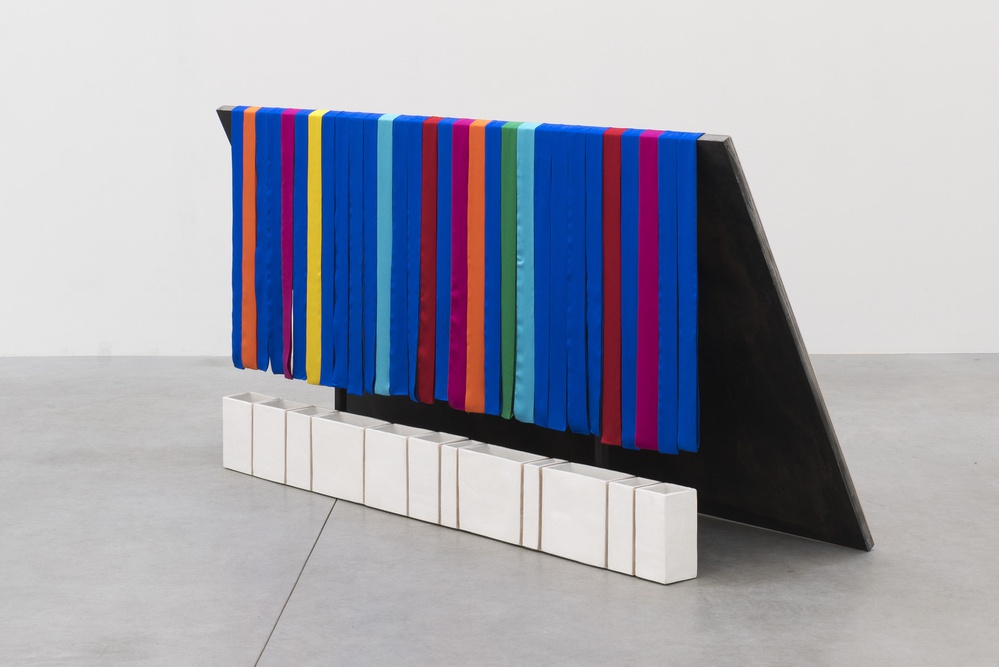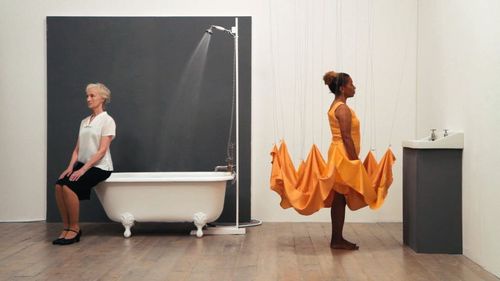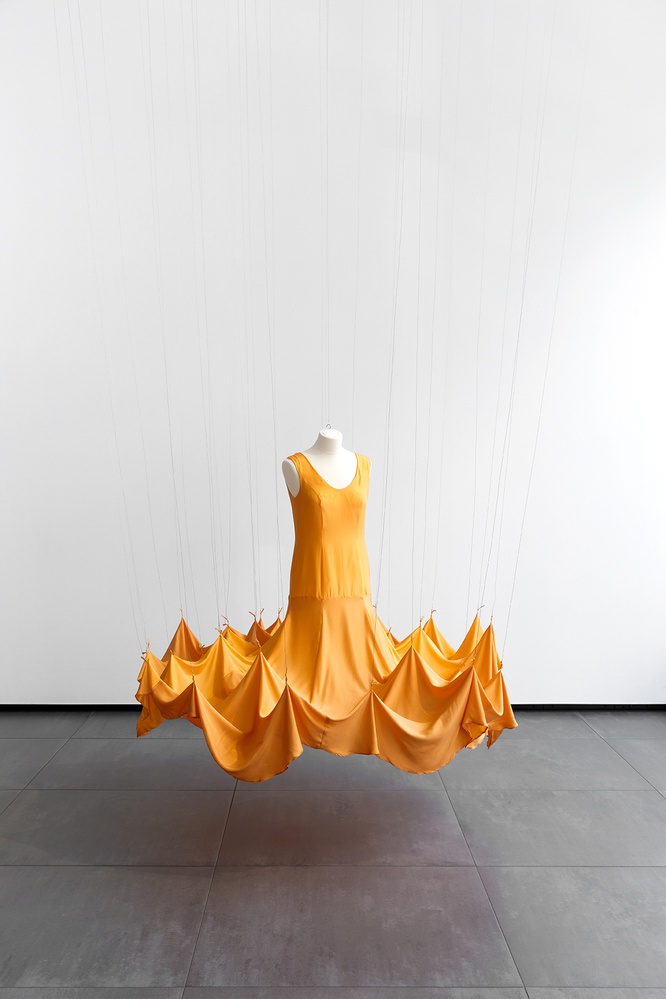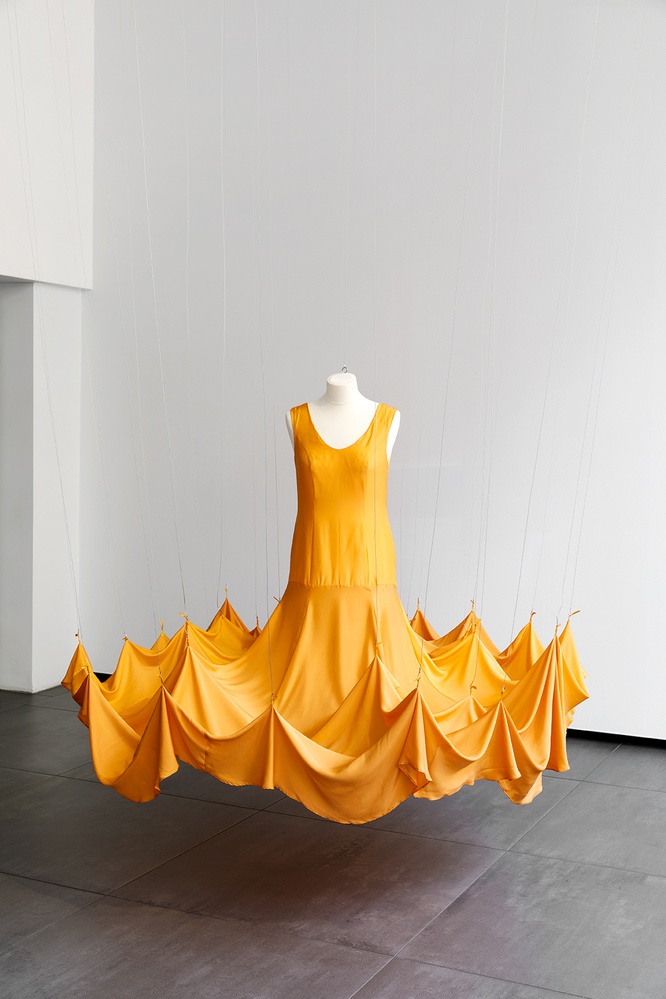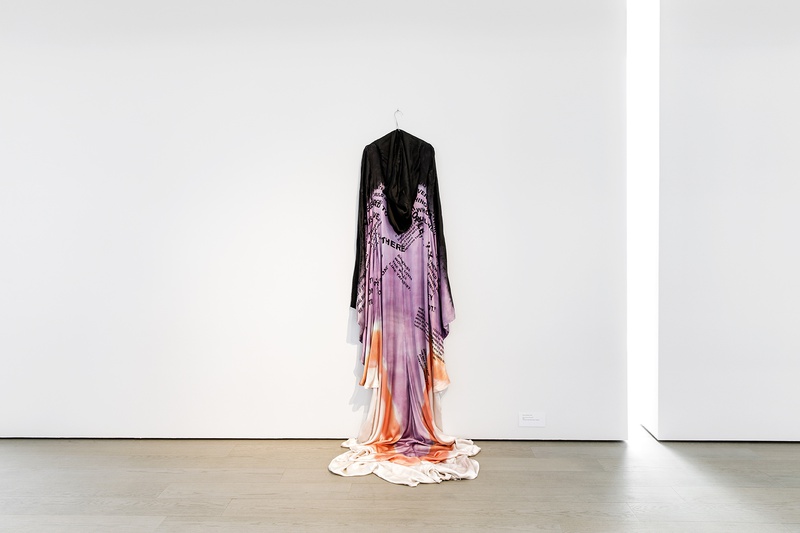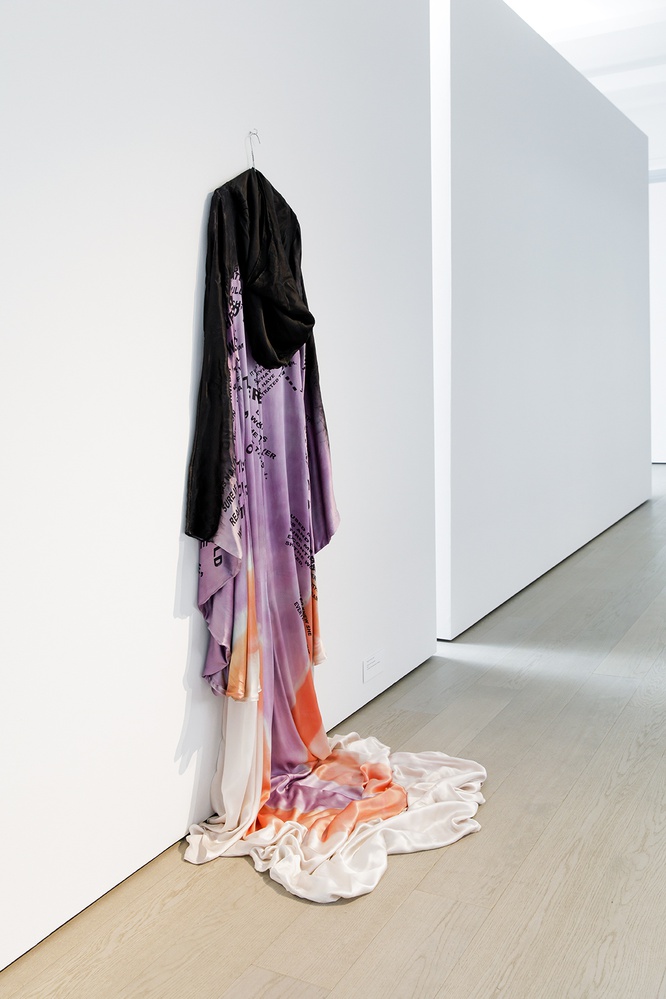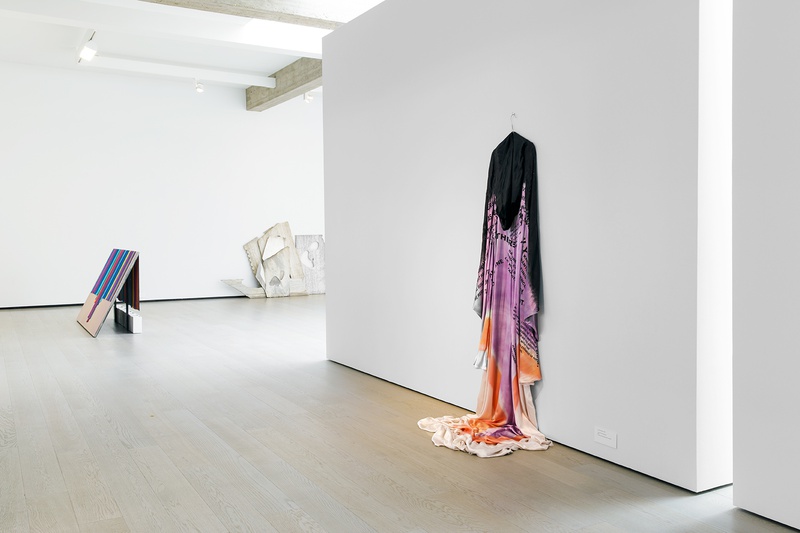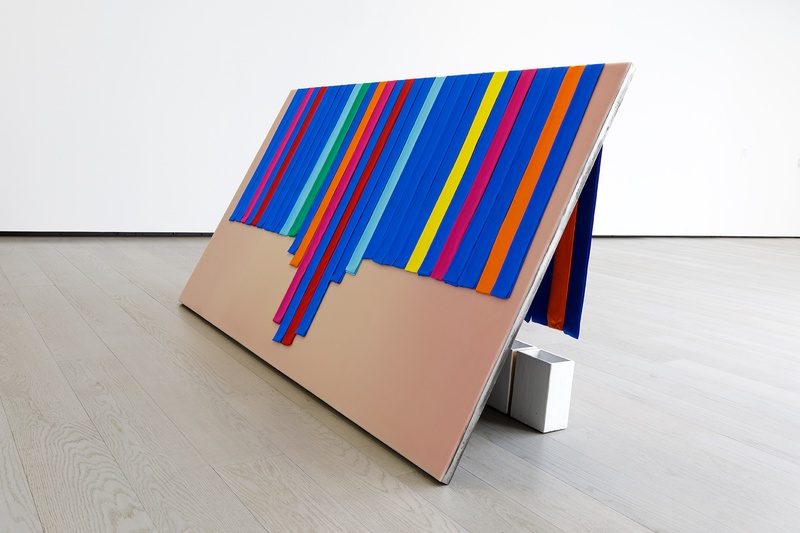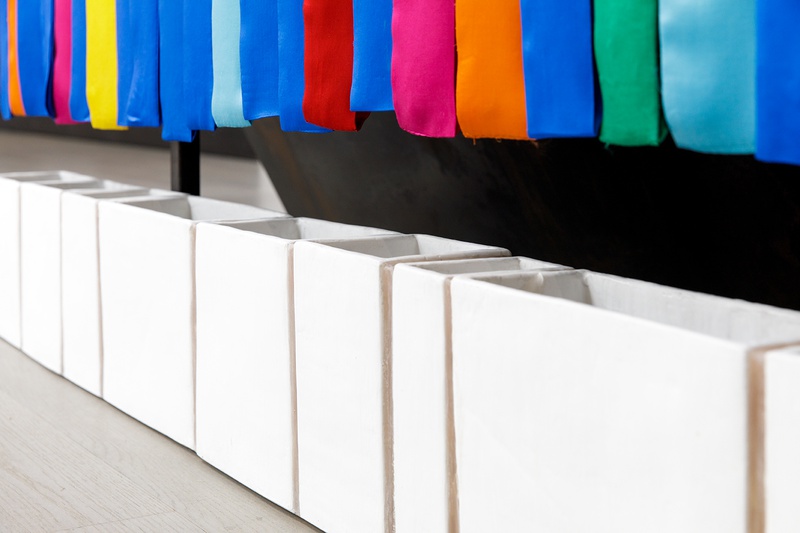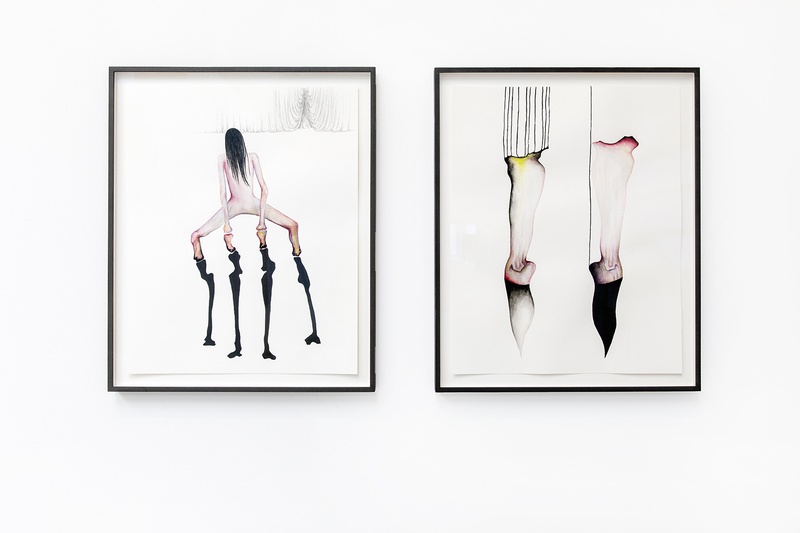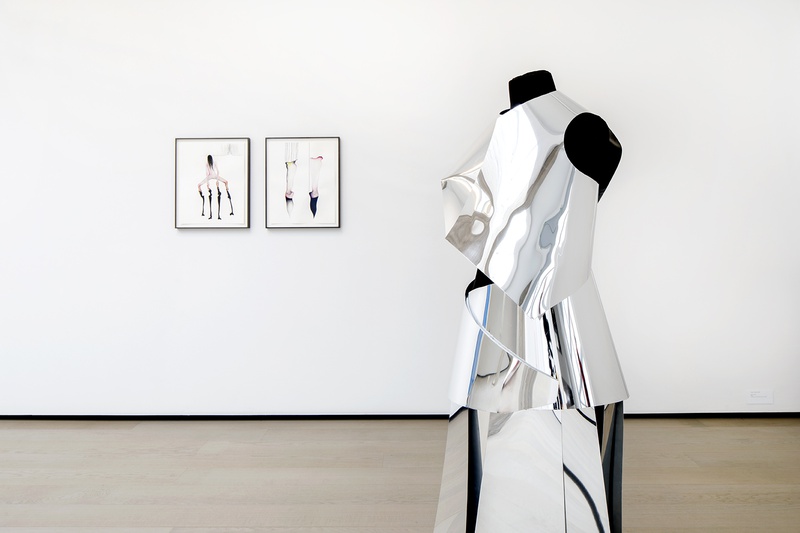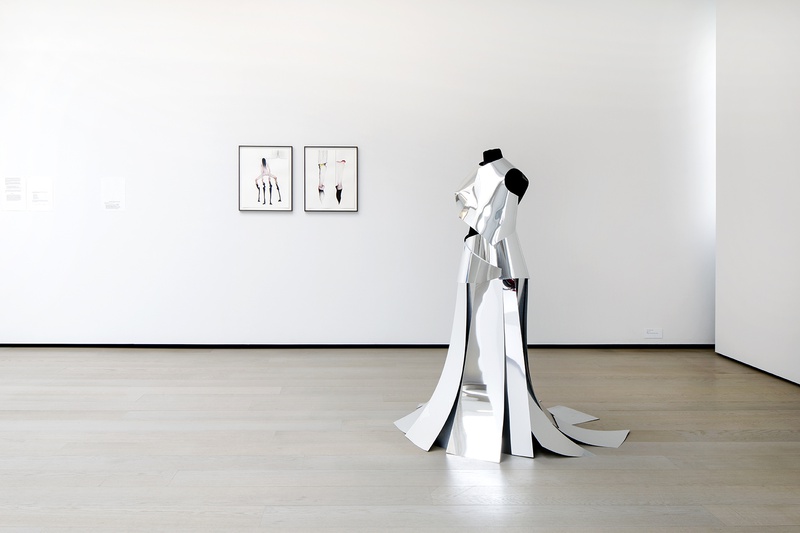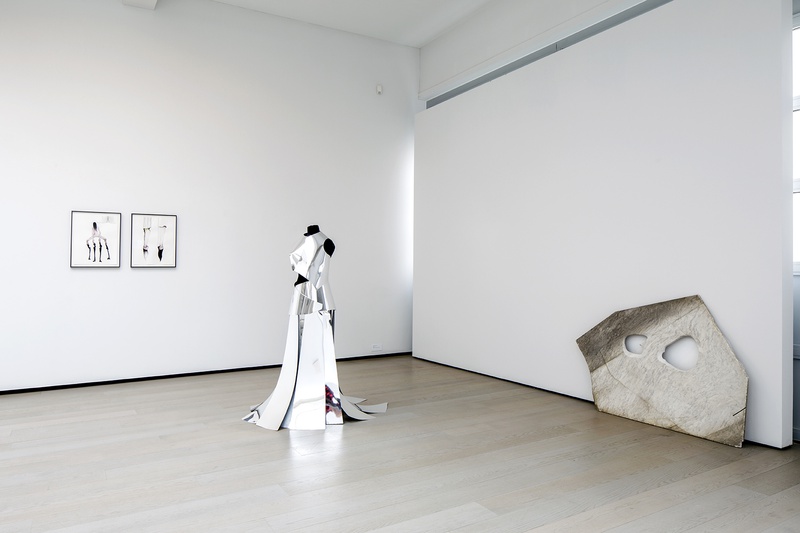In recent years Grace Schwindt (Germany, 1979) has made quite an impression with her films and performances. She manages to capture and express major themes in her crystal clear, poetic stories. Performers become objects, objects become costumes, and in turn costumes become performers again and video and dance continuously flow into each other.
Major events in history and social themes are reduced to a more human scale in her work. She succeeds in doing so because her videos and performances always zoom in on the lives of an individual or a small group of people. The theme of the videos and performances is worked out into great detail in a highly subtle way. Thanks to this approach, Schwindt manages to create several layers of meaning in her work. This means that visitors can identify with various characters in the performances and films and immerse themselves in the story completely, without it being essential to understand the deeper meaning of the work first.
Two important themes in Schwindt’s recent work are the fragility of the human body and the impact of capitalism on our contemporary society. The artist places question marks at the standards and systems that are typical of our capitalist society. She also places question marks at the way in which the individual is forced to both physically and mentally find their way in a society that is becoming increasingly tougher and harder. The structure of a society influences human behaviour and the social relationships of its citizens. By doing so it also encourages us to be aware of our bodies and shows our vulnerability and insecurity about our body.
According to Schwindt, a capitalist society sees the human body purely as a disposable object only serving the main goal of capitalism: achieving ever more economic growth. By doing so, capitalism denies the fundamental role of mortality in life. In her work, this artist seems to want to offer a countermovement by showing how each body does indeed have value, and is both vulnerable and mortal. The works by Schwindt reflect the ever-growing uncertainty in the labour market, the need for flexibility on the labour market and the increasing insecurity that is caused by this uncertainty for many citizens.
Four sculptures by Grace Schwindt are included in this exhibition. These sculptures are very different in terms of form and material and at a first glance they do not seem to have anything in common. What they do have in common, however, is that each sculpture has acted as an object in one of Schwindt’s performances or films. The fact that the works of art are now shown as individual sculptures is because the costumes, decors, objects and body movements created by the visual artist all have strong sculpture-like qualities and, as such, can be considered as autonomous works.
The sculpture Orange Dress is from the 2013 film Tenant. This film addresses an important social theme, which is dealt with in the form of an individual story. Against the backdrop of Frau Schumacher’s life, who is a communist who helped Vladimir Lenin travel from Switzerland to Russia at the beginning of the February revolution, this film is about oppressive family dynamics in a traditional German family. The film describes both the typical household routines and also the underlying relationships between the relatives. In this film Schwindt explores the role that language and movements play in the social relationships and, more specifically, in acquiring knowledge. One of the performers in the film Tenant is wearing a wonderful yellow silk dress with a pleated skirt. It’s as if this woman is about to go dancing at a ball. However, the opposite is true. This woman can’t move an inch and is caught in a web of threads. She is like a puppet being controlled by a puppeteer. Does this sculpture refer to the individual who feels caught and who is not able to make decisions independently? This is a situation that makes us feel insecure and vulnerable.
The sculpture Madness and Other Tales, which is also a costume from a performance by Schwindt with the same name, is also about the vulnerable human body. The sculpture and performance are based on the Aria of Madness in the 19th century opera Lucia di Lammermoor by Gaetano Donizetti. In this opera, the main character Lucia murders her husband-to-be. She was forced to get married to him for political reasons. This murder is presented in the opera as an act driven by madness. This work by Schwindt is a protest against the traditional patriarchal outlook on femininity, in which madness is seen as the motive for murder rather than the wish to be liberated from this oppressive situation. She criticises the classical image of the hysterical woman (a figure that is frequently used in literature and opera).
The choice of material in Madness and Other Tales, mirrors, is certainly no coincidence. Mirrors are sharp and hard, as opposed to the soft and vulnerable human body. In addition, the mirrors refer to the ‘mirror stage’ in child development. According to Lacan’s psychoanalysis this is the stage when the child overcomes the stage of fragmentation and powerlessness. The image of the dress reflected in the mirror also confronts the visitor. How about the vulnerability of our own body? How often are we exposed to uncertainties? Do we owe it to ourselves to try and overcome our feeling of powerlessness? Does Schwindt urge the visitor to become stronger or does she perhaps want to show us the beauty of the vulnerable body?
The words on the sculpture She and the Sandcastle refer to the performance with the same name by Schwindt and soprano Olivia Salvadori as performed during the opening. It is about the human need for security. It is about our need to have a place where we can really be ourselves. Our need to have a place where we feel safe. The lack of such a place in the literal sense of the word, but also a group of people to which we belong, is perhaps the main cause for the large number of mental problems and the high levels of insecurity in society today.
Dress and Burned Furniture is an autonomous sculpture and despite clear references to other installations it does not appear in one of Schwindt’s films or performances. Similar to nearly all her autonomous sculptures, Schwindt again combines carefully chosen contrasting materials and shapes creating a sculpture with major suggestive values, not in the least because the silk material make the visitors really want to touch sculpture. The title of the work makes the feelings of suggestiveness even stronger. What does the sculpture mean? What does it want to tell us? Are the long pieces of silk fabric really a dress or has the artist given the object a completely different meaning?
